Snapchat and Instagram Stories have quickly changed social media publishing and digital storytelling.
Top publishers and even staid news organizations are now harnessing the power of snackable, ephemeral content. It’s not for everyone, but Snapchat and Instagram Stories can delight your audience and help you reach younger readers.
Instagram Stories versus Snapchat Stories
On Instagram, Stories tend to use one punchy sentence or quotation per screenshot. The Instagram Stories visuals tend to go one of three ways:
- They’re very simple and aesthetically pleasing.
- They’re loud and eye-catching.
- They’re focused in on an eye-grabbing person or snapshot that’s going to resonate with the viewer or create a “thumb-stopping moment.”
On Snapchat, some of the above trends hold. However, the visuals of Snapchat Stories tend to be a bit more complex, including more animations and professionally shot videos. Snapchat Stories also tend to be wordier than Instagram Stories. On Snapchat, you’ll often see paragraphs of text.
Here are 10 more takeaways, tactics and trends gleaned from analyzing top Snapchat and Instagram publishers:
1. Spotlight hot stories.
Some publishers used Stories to direct followers to a particular “story of the day” or to inform readers about breaking news.
Publishers such as Bustle, LADbible, Bloomberg and TechCrunch use this method to highlight a timely story and encourage followers to swipe up for more.
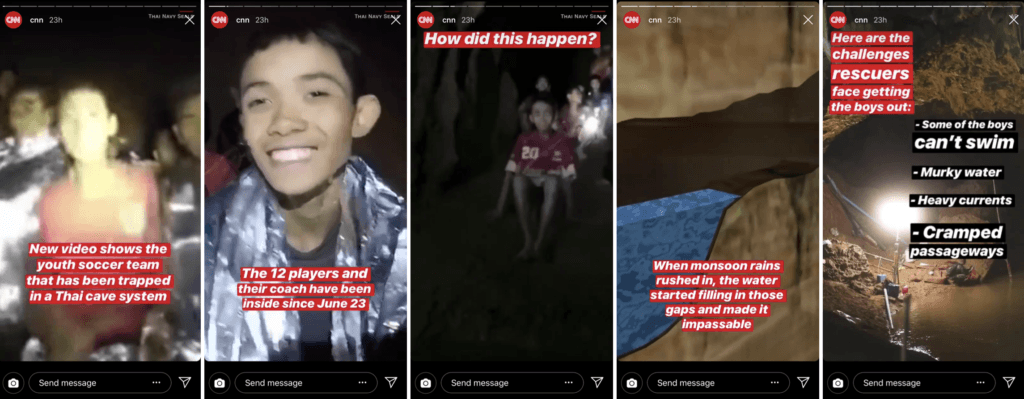
CNN, NowThis, The Guardian and other news publishers are using Stories to provide quick snippets of breaking news or current events.
2. Put followers in someone else’s shoes.
Snapchat and Instagram Stories are well suited to telling personal, individual stories. Publishers are maximizing this intimacy by using quotes directly from interview subjects, which helps establish an emotional connection.
[WEBCAST: Learn social media secrets from TED, Microsoft, Starbucks and more.]
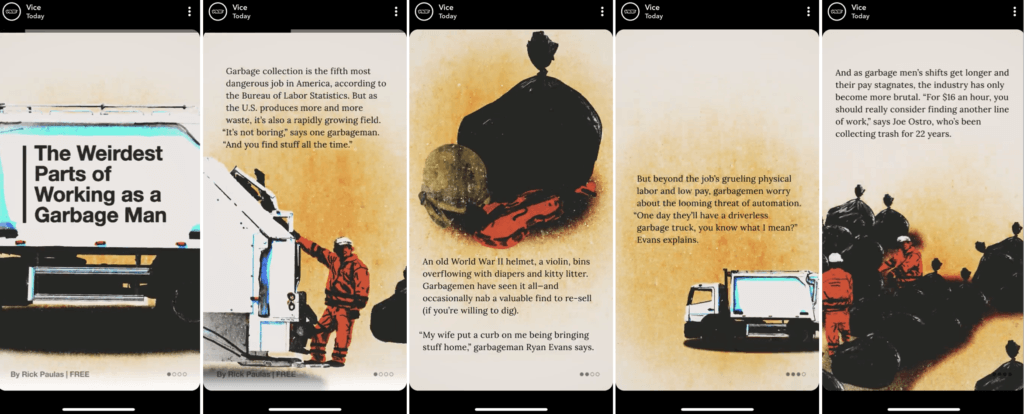
3. Humanize the storyteller or the outlet.
Several publishers are using Stories to give a voice to their own journalists and creators.
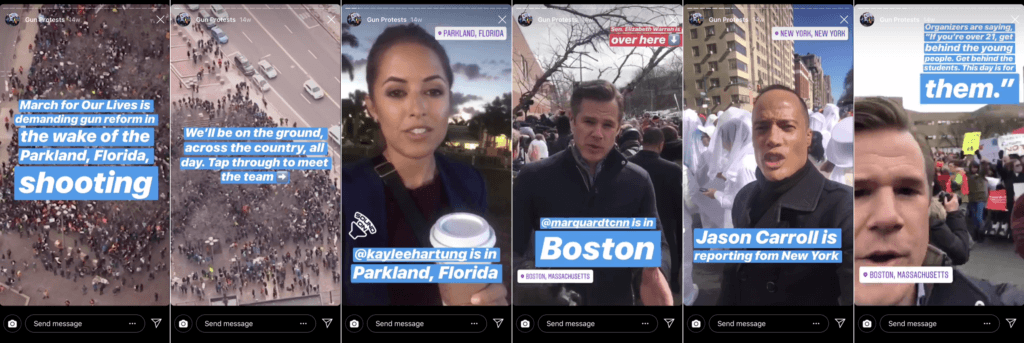
We see this with outlets covering serious topics (see CNN above) and those who publish lighter content, such as The Dodo and Barstool Sports.

This sort of behind-the-scenes access can build trust with followers and establish meaningful connections.
4. Provide inside peeks with celebrities and public figures.
Who doesn’t like a little insider access? Publishers are using Stories to give followers a glimpse into the personal lives of celebrities, athletes or other prominent industry figures.
It’s OK if you lack access to Ryan Gosling or Jennifer Lawrence. Vogue, for example, creates Stories featuring designers at fashion shows to appeal to apparel aficionados.
5. Offer behind-the-scenes access to events.
Snapchat and Instagram Stories are ideal for event reporting.
For example, Quartz took its followers to CES, Teen Vogue showed off its own summit, and The Dodo created Stories at “The Best Dog Day Ever.”
6. Build community.
Publishers are using Stories to create more dialogue and interaction with followers. BuzzFeed gamifies content and quizzes on Snapchat and Instagram, which gets users excited to participate and share results.
Bleacher Report uses an Instagram Stories feature to ask users to rate the uniforms of soccer teams, which can spark heated discussion.
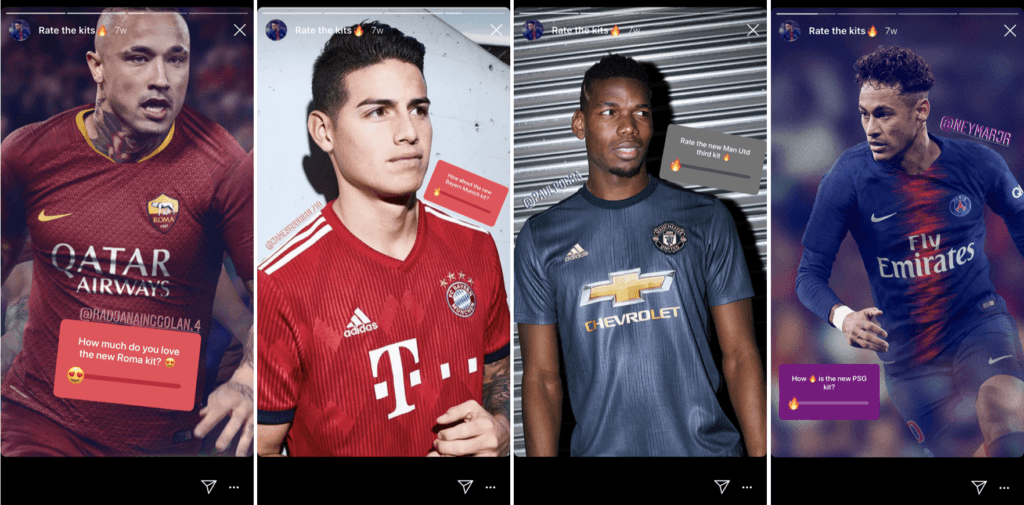
GQ’s Instagram Stories offer fashion advice and ask users’ thoughts on different looks.
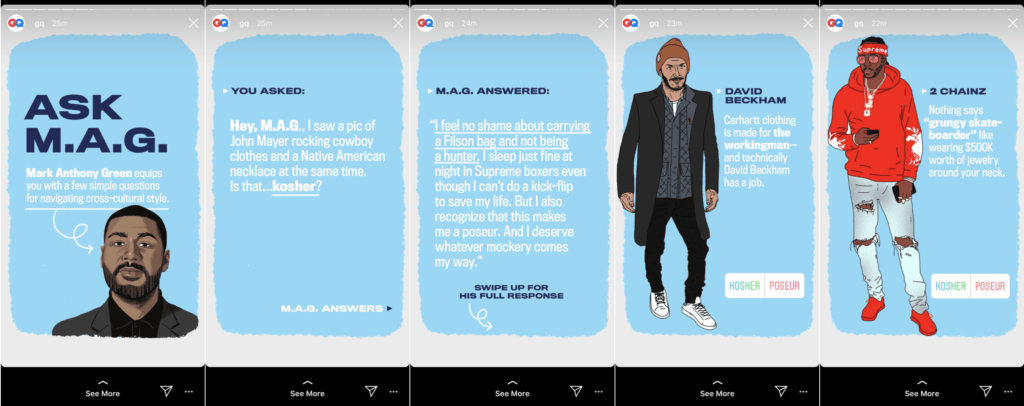
Regardless of your subject matter, it’s about reaching your audience with exactly what they’re passionate about.
7. Provide deeper context.
Stories also enable publishers to find more detail to expound upon articles. For example, Curbed’s Stories take followers deeper into its real estate posts.
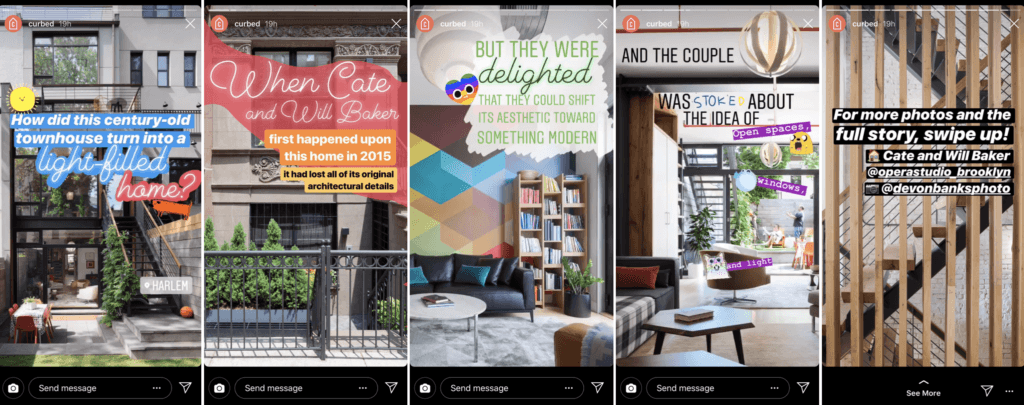
We’ve also seen publishers such as Teen Vogue create in-depth, behind-the-scenes Stories of print pieces.
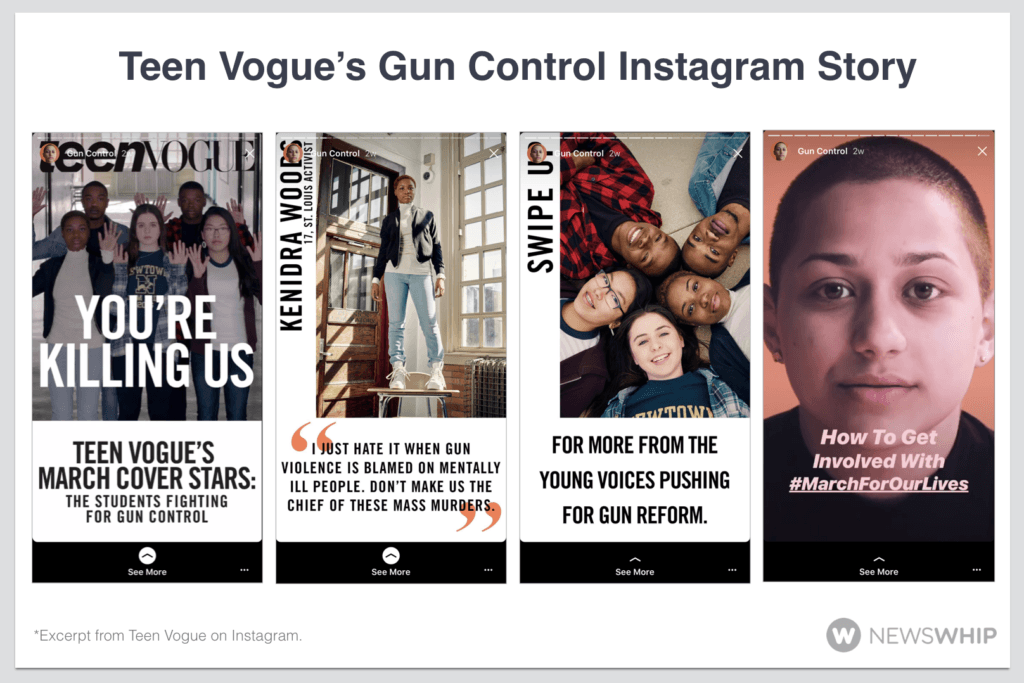
8. Satisfy curiosity, or teach something new.
Many publishers use Snapchat and Instagram to pique followers’ curiosity with punchy teasers or irresistible headlines. The example below from So Yummy reveals “secrets from employees” at McDonald’s. Then it delivers the goods.
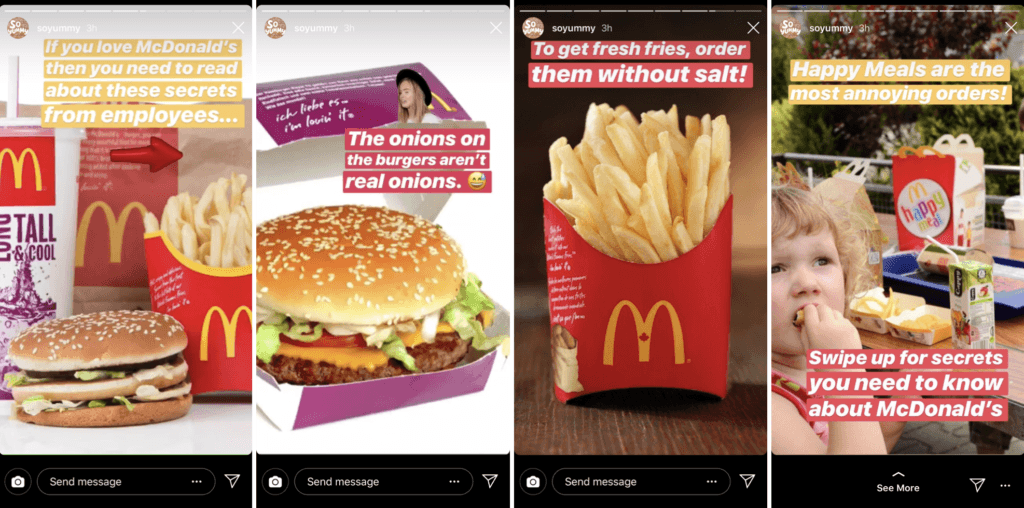
Quartz, Teen Vogue, Gizmodo, Bloomberg and The Wall Street Journal all use this tactic quite well, and The Washington Post uses Stories to break down complex issues.
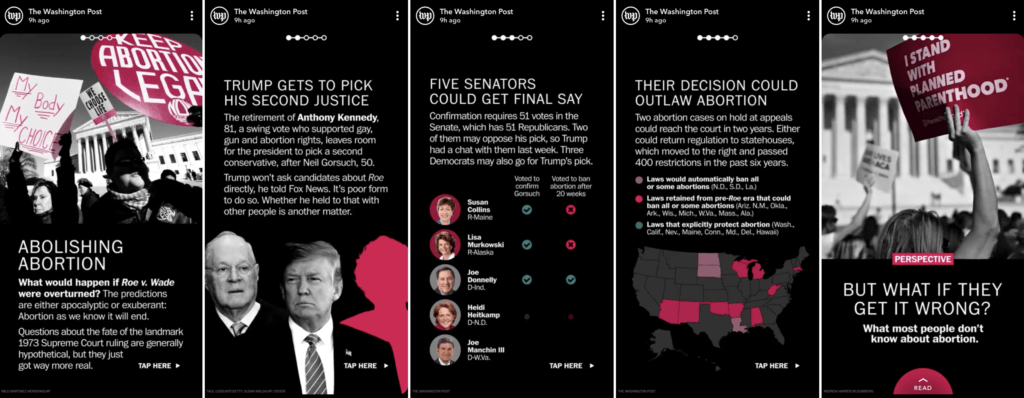
9. Inspire followers with actionable content.
Regardless of your beat, highly visual inspirational content is pure gold.
The Snapchat Story below from Harper’s Bazaar is all about inspiring followers to try a new hairstyle.
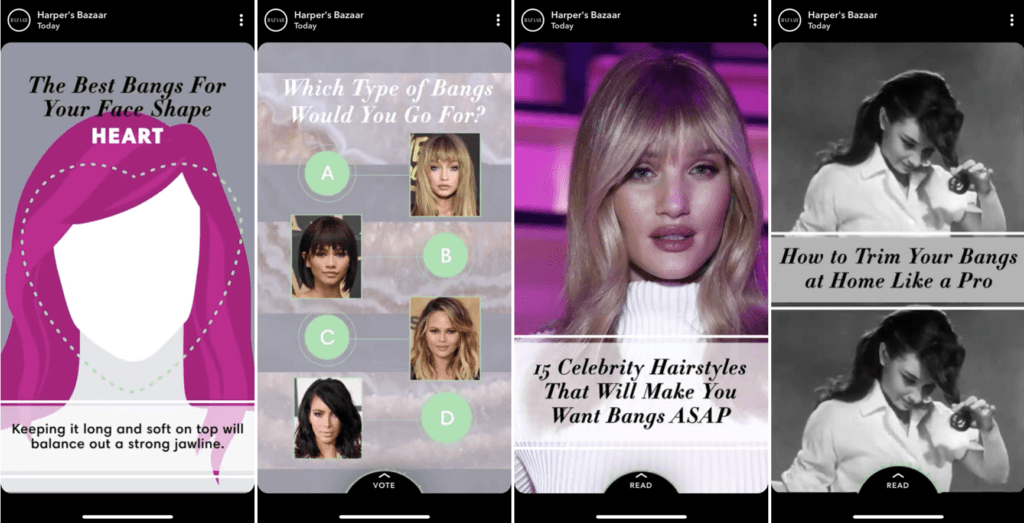
10. Launch branded content.
Stories offer a nice vehicle for sponsored content.
For example, here’s a natural content fit with UNILAD. The brand, New Amsterdam Vodka, is featured as a prop in a humorous video, which is on par for the publisher.
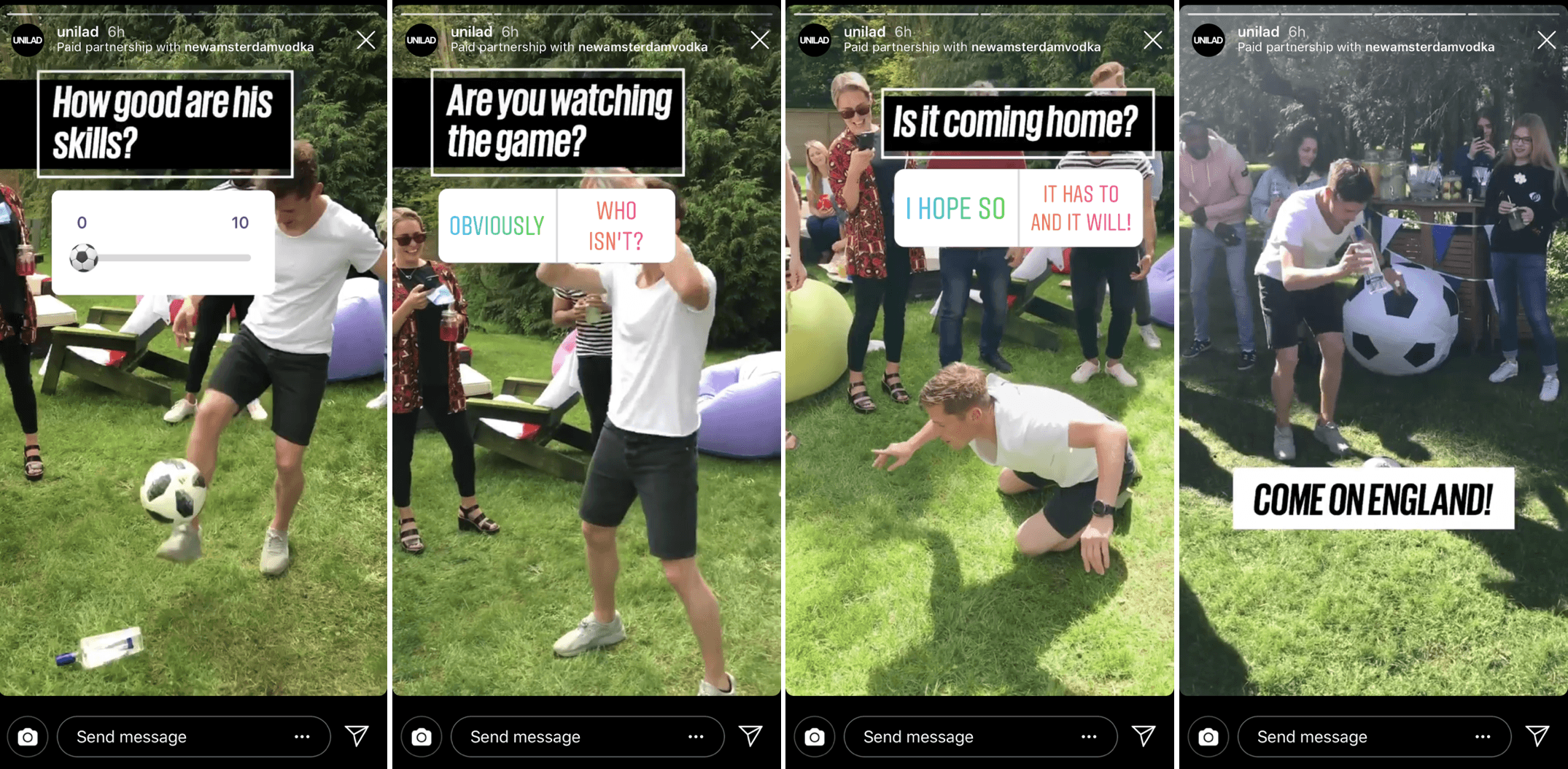
High Snobiety, a fashion publisher, uses this tactic as well.
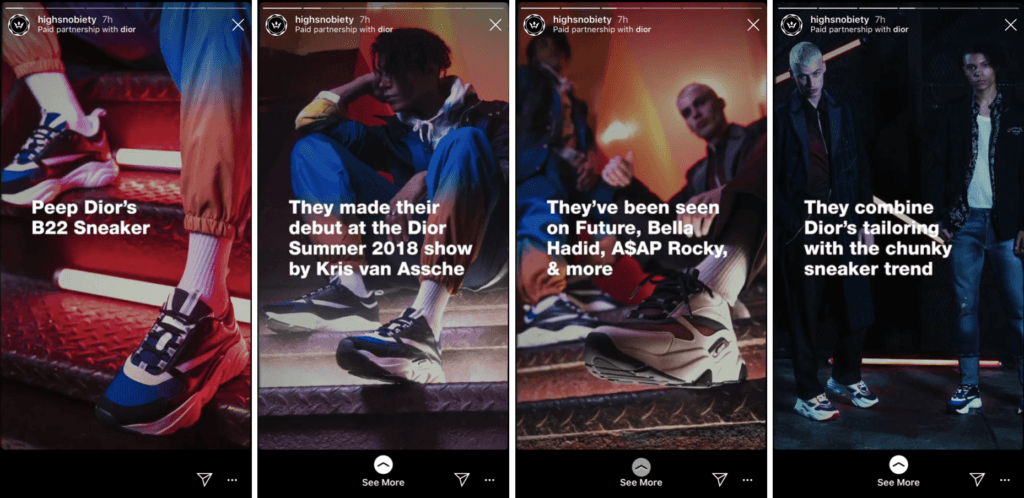
There are a variety of tactics worth exploring via Snapchat and Instagram Stories. It comes back to knowing your audience and the value of the content you’re creating for them.
Gabriele Boland is communication manager at NewsWhip. A version of this post first appeared on the NewsWhip blog.
(Image via)
from PR Daily News Feed https://ift.tt/2O7jsJD
No comments:
Post a Comment